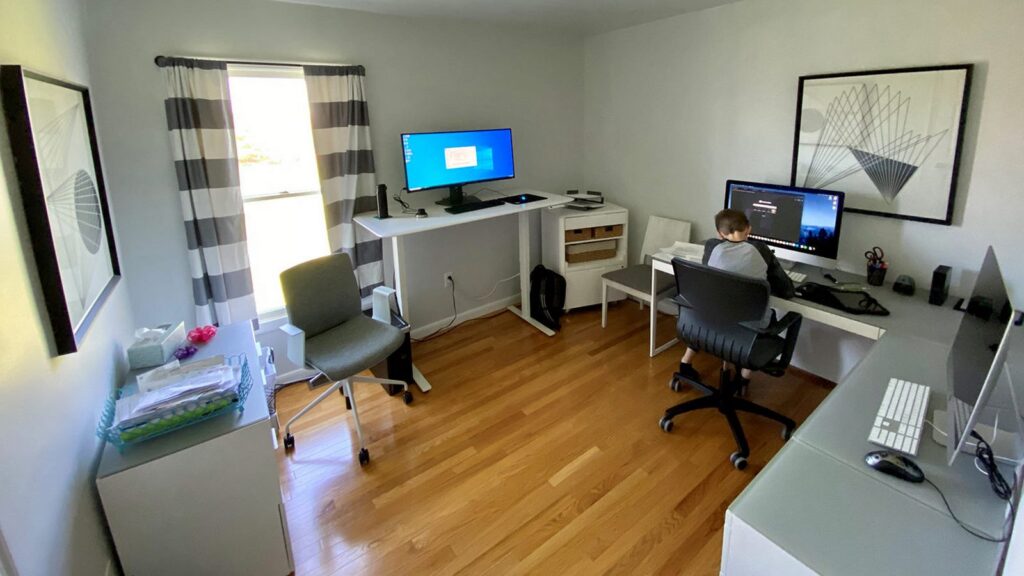Transitioning to remote work can be challenging, especially with the added responsibility of overseeing children’s schooling from home. The closure of co-working spaces and coffee shops due to shelter-in-place orders has further complicated the situation. Here are some strategies to navigate this new reality more smoothly.

Carve Out Your Territory
Ideally, each person should have a designated workspace. If separate rooms aren’t available, get creative with the available space. Consider converting an empty closet into a private nook or setting up a comfortable workstation in a corner of the kitchen.
Create a Shared Calendar and Communicate
In households where individual offices aren’t feasible, having at least one dedicated home office space can help manage everyone’s tasks effectively. Use a shared Google calendar to coordinate schedules for conference calls, teaching sessions, and deadlines. Clear communication about workspace usage throughout the day is essential to avoid conflicts.
Set the Kids Up for Success
When balancing work and childcare responsibilities with your partner, consider each other’s peak productivity times. Schedule work tasks accordingly to maximize efficiency. Inform your employer and colleagues of your availability and offline times. Utilize educational resources like Khan Academy Kids to engage children constructively during screen time.

Stick to Your Schedule
Establish clear boundaries between work hours and personal time to prevent burnout. Resist the temptation to continue working beyond designated hours. Create a routine by starting and ending the workday at consistent times. Maintain personal hygiene practices like showering and changing clothes to mentally transition between work and leisure.
Schedule Time Together, and Apart
Incorporate activities that promote family bonding and relaxation into your schedule. Whether it’s watching a movie together, playing games, or trying new hobbies, prioritize quality time as a family. Additionally, allocate time for personal activities to maintain a sense of balance and individual fulfillment.
Navigating remote work and schooling from home with a family requires patience, flexibility, and effective time management. While these times are challenging, implementing these strategies can help establish a sense of normalcy and promote well-being for everyone involved. Stay safe, and don’t hesitate to share any additional tips or advice you may have!








Leave a Reply